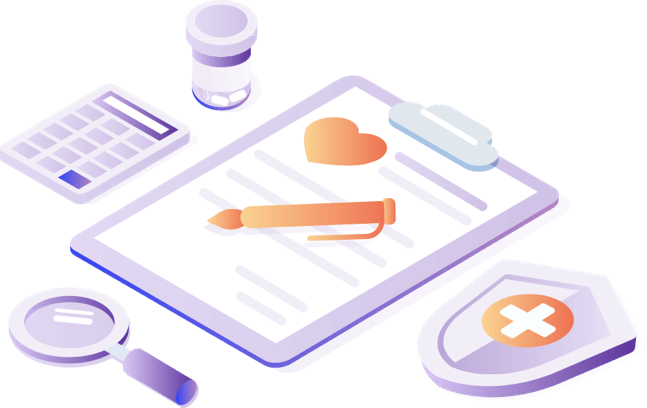Find us here
Research and Development (R&D) tax relief is generally considered by pharmaceutical companies, but is often missed in some areas of the healthcare sector, where many activities would qualify and could lead to cash savings.

What actually constitutes R&D is wide ranging, but includes the development or improvement of a product or process - there must be a technological advancement (i.e. something new or an appreciable improvement over what is currently available) and an attempt to resolve technological uncertainties (i.e. there must be difficulties and challenges for an experienced chemist, engineer, technician or scientist). The project does not have to actually achieve its aims in order to qualify.
Benefits
For small and medium sized businesses (SMEs) this takes the form of an additional tax deduction calculated as 130% of qualifying costs and provides an effective cash tax benefit of c25% for profitable companies. For loss making companies, a cash credit of up to 33.35% is available.
For expenditure from 1 April 2023, the rates are reduced with an additional tax deduction of 86% of qualifying costs, providing an effective cash tax benefit of up to 21.5% for profitable companies. For loss making companies, a cash credit of up to 18.6% will be available.
For larger companies (over 500 employees and either €100m turnover or €86m gross balance sheet) the benefit is reduced, but is recognised above the line, i.e. as an increase to operating profit. The effective cash tax benefit is 10.53% of the spend. For loss making companies, the 10.53% is available as a cash credit.
For expenditure from 1 April 2023, the effective cash tax benefit will be 15% of the spend. For loss making companies, the 15% is available as a cash credit.
Capital spend on R&D (for example on new premises or equipment) should also not be overlooked as there is an immediate deduction available for capital R&D expenditure. This can give a significant cash-flow benefit when compared to other allowances where, the relief could be given over more than 10 years, and in many cases, over 33 years.
Qualifying Costs
You can claim relief on costs that have been expensed through the Profit & Loss account and in certain circumstances you can also claim expenditure capitalised as intangible assets). The main areas of costs that can be claimed are:
- Staff costs (gross pay, employer's NI, employer's pension contributions and certain reimbursed expenses) of employees directly and actively involved in the R&D and also where undertaking certain supporting activities.
- Agency workers.
- Subcontractors/freelancers.
- Software license costs.
- Consumable items (including a proportion of heat, light and power).
- Payments to clinical trial volunteers.
Understanding your industry
Within the pharmaceutical arena specifically, R&D typically takes place in three stages:
- Drug discovery - identification of promising new chemical entities.
- Pre-clinical trials - non-human testing of compounds.
- Clinical trials
- Phase I – Toxicity tests
- Phase II - Preliminary efficacy tests
- Phase III – Comparative efficacy and tolerability tests
- Phase IV – Post launch trials
As a rule of thumb, eligible activities take place up until the end of Phase III clinical trials, although every case needs to be looked at on its own merits.
An area that is often missed though is generic manufacturers, where qualifying activities can include the production of a drug that works in exactly the same way as the branded ones. In general it is only the active ingredient for which the quantity is known, and therefore R&D work needs to take place to ensure the binding, stability and release profile are replicated.
Within the wider industry, R&D can be found in many other areas, including:
- Equipment for drug administration.
- Methods of drug delivery.
- Development of medical equipment including diagnostics, life support, treatment, monitoring, laboratory and analytical equipment.
- Non-medical electrical equipment such as personal alarms and pagers.
- Development of home medical equipment such as catheters, wheelchairs, patient lifts, crutches, artificial limbs and nebulisers.
- Development of new or improved disinfection and sterilisation chemicals and equipment, including mechanical or automatic cleaners, such as ultrasonic cleaners, washer-decontaminators, washer-disinfectors and washer-sterilisers.
- Development of disposable items such as paper towels, syringes, needles, gloves, scalpels, masks, pads, sanitary products or various disposable parts used in areas such as gynaecology, urology, surgery or anaesthesia.
Why THIS R&D?
The tax relief available is generous, but claims must be properly made to ensure they meet HMRC requirements. HMRC will review all claims carefully - so it is important to work with experienced tax advisors to ensure any claim meets the necessary criteria.
THIS R&D can assist by ensuring that all activities that could qualify for the relief are identified, assessed, documented and where appropriate, claimed. Tom Byng has over 20 years’ experience of R&D claims, not only in the healthcare and pharmaceutical industry but also in numerous other sectors and has developed a cost-effective methodology, working with you to prepare a robust R&D claim with minimal disruption to your core business. We will also leave you with a working model such that you are in a position to prepare subsequent claims in house, if required.